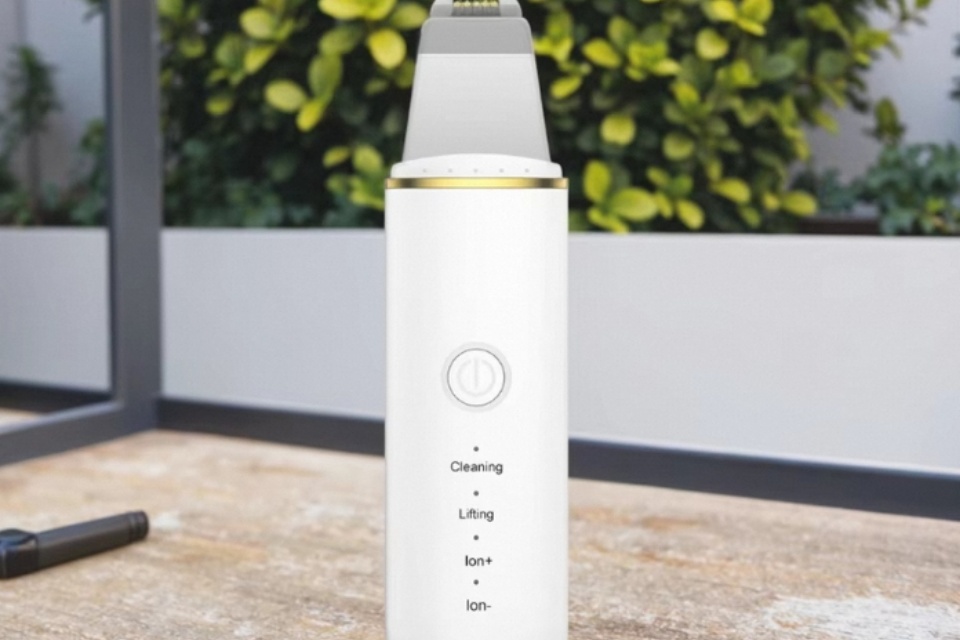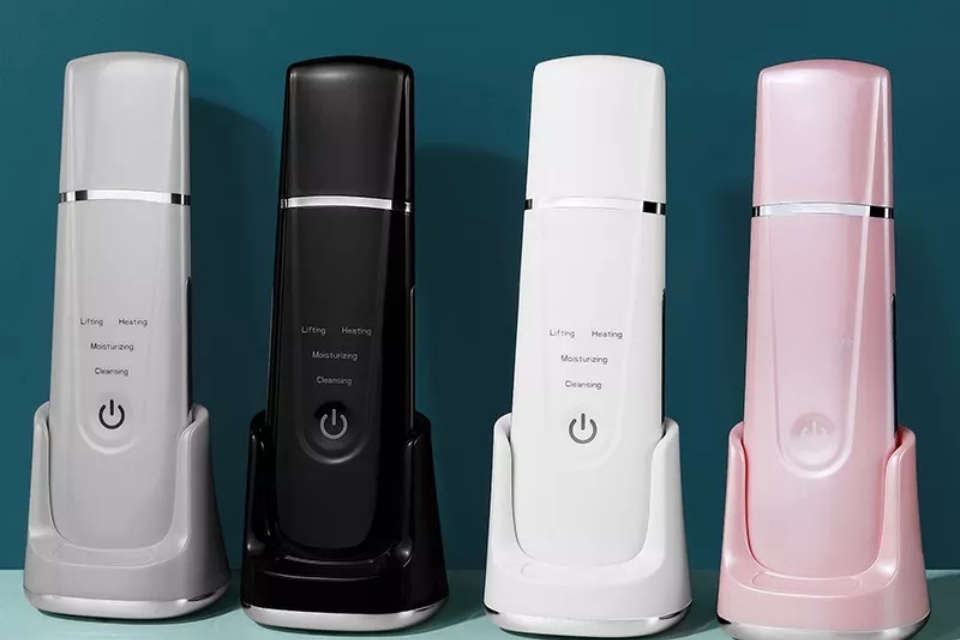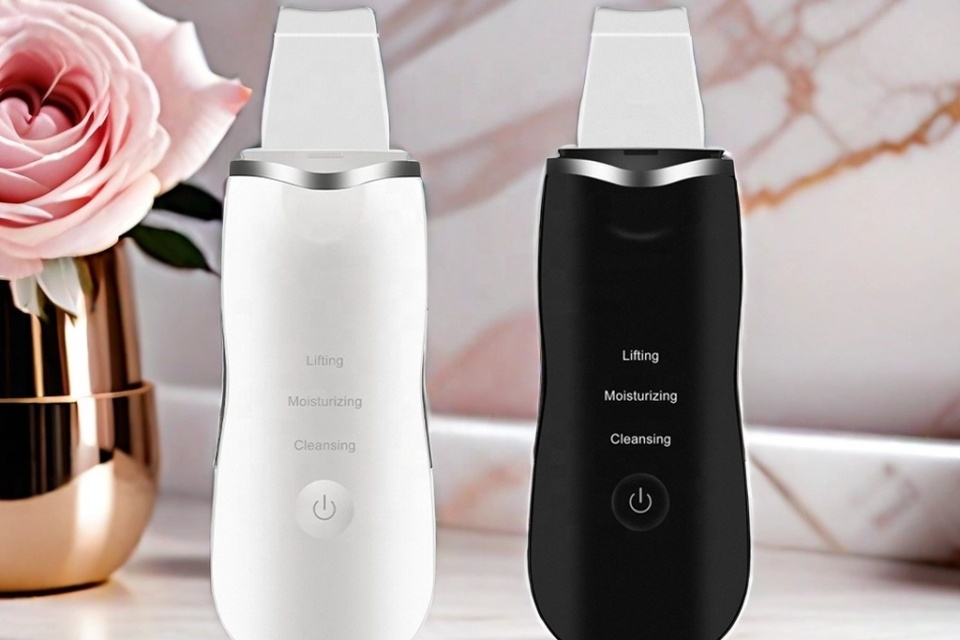Ultrasonic Skin Scrubbing-What It Is And How It Works
Summary
Ultrasonic skin scrubbing is a non-invasive skincare treatment that utilizes high-frequency sound waves to cleanse, exfoliate, and rejuvenate the skin. Operating at ultrasonic frequencies between 28,000 and 30,000 hertz, these devices generate vibrations that effectively remove dead skin cells, dirt, and impurities, enhancing the overall complexion without the harshness associated with traditional methods like mechanical exfoliation or chemical peels. Notably popularized in the early 2000s, ultrasonic skin scrubbers have gained traction among both beauty professionals and consumers, spurred by the increasing demand for effective at-home skincare solutions and the rise of social media beauty influencers promoting innovative techniques.
The mechanism of action involves the use of a spatula or probe that emits ultrasonic waves into a water-based medium, creating a micro-massage effect that loosens and dislodges debris from the skin. This process not only promotes deep cleansing and exfoliation but also enhances the absorption of skincare products, thereby improving their efficacy. Users typically experience no downtime post-treatment, making it a convenient option for individuals with busy lifestyles.
Despite its many benefits, ultrasonic skin scrubbing does come with considerations, including potential contraindications for individuals with specific health conditions and the necessity for proper device maintenance to ensure safety and efficacy. Additionally, concerns regarding device costs and regulatory challenges may limit access for some consumers, particularly in emerging markets. Overall, as awareness and interest in ultrasonic skin scrubbing continue to grow, the market is expected to expand significantly, driven by technological advancements and shifting consumer behaviors towards more sustainable and personalized skincare solutions.
History
The concept of ultrasonic skin scrubbing emerged from advancements in dermatological technology and the growing demand for non-invasive skincare solutions. Initially, ultrasonic devices were developed primarily for medical applications, utilizing high-frequency sound waves to enhance tissue healing and reduce inflammation. Over time, these technologies were adapted for cosmetic use, leading to the introduction of ultrasonic skin scrubbers in the beauty industry.
The transition to ultrasonic skin scrubbers marked a significant shift in skincare practices, moving away from traditional mechanical cleansing methods towards more innovative approaches. The devices gained popularity in the early 2000s as beauty professionals and consumers alike recognized their efficacy in providing deep cleansing and exfoliation without the harshness associated with manual techniques.
With the rise of social media and beauty influencers, awareness of ultrasonic technology expanded, leading to increased consumer interest in at-home skincare devices. Reports indicate that a growing percentage of consumers are now prioritizing skincare over makeup, driving demand for effective and convenient solutions that can be utilized outside of professional settings.
Furthermore, the COVID-19 pandemic accelerated this trend as individuals sought safe and efficient alternatives to in-clinic treatments, prompting a surge in the availability and sales of portable ultrasonic facial devices. As a result, the market for ultrasonic skin scrubbers has seen steady growth, influenced by innovations in technology and shifts in consumer behavior towards sustainable and effective skincare solutions.
Mechanism of Action
Ultrasonic skin scrubbing is a non-invasive skincare treatment that employs high-frequency sound waves to cleanse and exfoliate the skin. The device typically operates at ultrasonic frequencies between 28,000 and 30,000 hertz (Hz), which are beyond the range of human hearing.
Sound Wave Generation and Propagation
The ultrasonic skin scrubber generates high-frequency sound waves that are emitted from a spatula or probe. These waves travel through a water-based medium, such as a conductive gel or water, which enhances their efficacy. As the sound waves propagate, they penetrate the skin's surface, inducing rapid vibrations that create a micro-massage effect. This action helps to loosen dead skin cells, dirt, and oil, promoting a deeper cleansing process.
Cleansing and Exfoliation
The primary function of ultrasonic skin scrubbers is to deeply cleanse the skin. The emitted vibrations facilitate the breakdown of dead skin cells and push impurities out of the pores, leading to clearer and smoother skin. The ultrasonic waves also trigger a micro-explosion effect in the water on the skin's surface, further aiding in the removal of debris. This gentle exfoliation is particularly beneficial for sensitive skin, as it avoids the use of abrasive particles or harsh chemicals.
Enhanced Absorption and Circulation
Following the ultrasonic cleansing process, the skin becomes more permeable and receptive to skincare products, which allows for improved absorption of serums and moisturizers. Additionally, the soft vibrations stimulate blood flow, promoting collagen and elastin production within the skin. This dual action not only enhances the effectiveness of topical treatments but also contributes to overall skin health by encouraging detoxification and oxygenation of skin cells.
Considerations
While ultrasonic skin scrubbers are generally safe and effective, it is important to use them with caution. Users should avoid applying excessive pressure during use, as this can lead to discomfort or irritation. Regular maintenance of the device, including sanitization and replacement of the spatula-like tip, is essential for optimal results and safety.
Procedure
The ultrasonic skin scrubber procedure typically follows a series of steps designed to ensure effectiveness and client comfort.
Preparation
Before beginning the treatment, the client's makeup is completely removed, and the skin is thoroughly cleansed to eliminate any surface residue. This initial step is crucial for preparing the skin for optimal results.
Hydration
Once the skin is clean, the esthetician applies a suitable hydrating solution or gel to the client's face. Hydration is essential as it prepares the skin for the ultrasonic treatment and enhances the effectiveness of the procedure.
Ultrasound Spatula Application
The core of the ultrasonic skin scrubber procedure involves the use of a specialized spatula attached to the ultrasonic skin scrubber machine. This spatula emits ultrasound oscillations that create vibrations on the skin's surface, facilitating deep cleansing and enhancing product absorption.
No Downtime
A significant advantage of skin scrubber treatments is that they require no downtime, allowing clients to resume their daily activities immediately after the procedure. This feature makes it a popular choice among individuals with busy schedules.
Versatility
Ultrasonic skin scrubbers can be used in combination with other skincare treatments, allowing for customizable treatment plans tailored to individual client needs. Estheticians can recommend specific products and ingredients to address unique skin concerns, which can be applied following the treatment for maximum benefit.
The entire procedure is typically comfortable and painless, with clients often experiencing only a gentle vibration sensation during the ultrasonic treatment.
Benefits
Ultrasonic skin scrubbing offers a range of benefits that contribute to healthier and more radiant skin. This technique employs ultrasonic skin scrubbers to provide deep cleansing and exfoliation, which can enhance the overall efficacy of skincare routines.
Exfoliation
Ultrasonic skin scrubbers facilitate gentle exfoliation, which effectively removes dead skin cells from the skin's surface. This process not only enhances skin texture and tone but also promotes skin cell turnover, leaving the complexion looking brighter and more youthful. The gentle nature of ultrasonic exfoliation minimizes irritation, making it suitable for various skin types, including sensitive skin.
Deep Cleansing
One of the primary benefits of ultrasonic skin scrubbing is its ability to deeply cleanse the skin. The rapid vibrations generated by the ultrasonic waves help to dislodge and remove dirt, oil, and impurities from the pores, preventing breakouts and blackheads. This thorough cleansing results in clearer skin and a reduction in acne lesions.
Improved Product Absorption
After undergoing ultrasonic scrubbing, the skin becomes more receptive to skincare products. By removing the outer layer of dead skin cells, serums and moisturizers can penetrate more deeply and effectively, enhancing their absorption by up to 40%. This increased absorption allows for better results from active ingredients such as hyaluronic acid and niacinamide.
Stimulation of Collagen Production
The mechanical vibrations produced during ultrasonic treatments stimulate the skin's fibroblasts, which are crucial for collagen and elastin production. This stimulation can lead to improved skin elasticity and firmness over time, contributing to a more youthful appearance.
Hydration
Ultrasonic skin scrubbing can also improve the skin's ability to retain moisture, addressing issues such as dryness and flakiness. By enhancing hydration levels, this technique helps achieve a smoother and more supple skin texture.
Reduction of Oily Skin
For individuals with oily skin, ultrasonic scrubbers can help balance oil production by clearing clogged pores and preventing excess sebum buildup. This process reduces the likelihood of acne and other related skin conditions.
Relief from Inflammation
Ultrasonic treatments can be beneficial for addressing inflammatory skin conditions, such as mild rosacea or redness. The gentle exfoliation and deep cleansing help soothe inflamed skin, promoting a more even complexion.
Risks and Considerations
Ultrasonic skin scrubbing, while popular for its benefits in skin cleansing and rejuvenation, is not without risks and considerations that users should be aware of prior to undergoing treatment.
Contraindications
Certain health conditions may restrict individuals from safely undergoing ultrasonic skin treatments. Contraindications include pregnancy, active skin infections, the presence of pacemakers, and other cardiovascular issues. Individuals with diabetes, severe infections, or those undergoing chemotherapy should also seek medical advice before considering ultrasonic treatments.
Device Safety and Efficacy
Concerns regarding the safety and efficacy of ultrasonic devices can hinder market adoption, particularly among first-time users. Potential side effects include temporary redness, tenderness, and increased sun sensitivity following treatment, which may prompt users to exercise caution and consult professionals before treatment. It is crucial for users to follow institutional guidelines regarding equipment cleaning and disinfection to minimize risks associated with device usage, particularly in resource-limited settings.
High Device Costs and Accessibility
The high costs associated with premium ultrasonic skin scrubbing devices present a significant barrier, particularly in emerging economies. Devices with advanced features can range from USD 100 to USD 500, making them inaccessible for many in price-sensitive regions. The financial implications may lead consumers to opt for traditional skincare methods or lower-cost alternatives, impacting overall market growth in these areas.
Regulatory Hurdles
Manufacturers face regulatory challenges that complicate the certification processes for ultrasonic devices. Variations in safety standards and classifications across different regions can delay market entry and increase costs, further impacting accessibility and consumer confidence in these products.
User Education
Proper education regarding the use of ultrasonic devices and the cleaning agents employed is essential. Misuse or inadequate cleaning protocols can lead to equipment damage and may pose patient safety issues. Therefore, ongoing consumer education and strict adherence to manufacturer guidelines are necessary to mitigate risks associated with ultrasonic skin scrubbing.
Comparison with Other Skin Treatments
Ultrasonic skin scrubbing presents a unique approach to skincare that contrasts sharply with more traditional treatments. This technique leverages high-frequency sound waves to perform exfoliation and deep cleansing without the aggressive effects often associated with mechanical methods.
Advantages over Chemical Peels
One of the key benefits of ultrasonic skin scrubbing is its gentle nature compared to chemical peels. While chemical peels can effectively remove dead skin and improve texture, they often involve the use of acids that may cause irritation or require downtime for recovery. In contrast, ultrasonic treatments are non-invasive and generally suitable for all skin types, providing immediate results with minimal side effects like temporary redness or mild tingling.
Comparison with Microdermabrasion
Ultrasonic scrubbing also offers advantages over microdermabrasion, another popular exfoliation method. Microdermabrasion involves physically abrading the skin's surface with fine crystals, which can be uncomfortable and may not be suitable for sensitive skin. Ultrasonic skin scrubbers, on the other hand, utilize vibrations to dislodge dead skin and impurities gently, allowing for a more comfortable experience with no downtime required.
Integration with Other Treatments
Ultrasonic skin scrubbing can complement other skincare modalities, enhancing their effectiveness. For instance, by improving product absorption, this technique can maximize the benefits of serums and moisturizers applied after treatment. Additionally, it can be effectively combined with procedures such as diamond microdermabrasion and cryotherapy facials, creating a comprehensive treatment plan tailored to individual skin concerns.
Limitations and Considerations
Despite its benefits, ultrasonic skin scrubbing is not without limitations. It may not be the best choice for individuals with certain skin conditions, such as severe acne or rosacea, where irritation could occur. Furthermore, patients with specific contraindications, like heart conditions or pregnancy, should avoid this treatment.
Consumer Trends
Market Dynamics
The ultrasonic skin scrubber market has experienced significant growth due to evolving consumer preferences and behaviors. Key factors influencing market dynamics include increasing awareness of skincare benefits, the influence of beauty culture, and rising disposable incomes, particularly in emerging economies across Asia-Pacific and Latin America. As consumers allocate more resources to personal care and wellness, the adoption of advanced skincare tools has notably increased, facilitated by the ease of access provided by e-commerce platforms.
Shift to Online Retail
Online retail has emerged as the fastest-growing channel in the ultrasonic beauty device market, largely driven by digital transformation, influencer marketing, and the overall boom in e-commerce. The convenience of home delivery, easy price comparison, and peer reviews have compelled consumers to transition from offline to online shopping channels. Notably, 63% of beauty tech sales in 2023 occurred via direct-to-consumer (D2C) e-commerce platforms such as Shopify, Instagram, TikTok, and YouTube, highlighting a shift towards a more tech-savvy and convenience-oriented consumer base.
Influence of Social Media and Demographics
The role of social media influencers and platforms in shaping consumer consciousness around skincare cannot be overstated. Reports indicate that 72% of consumers globally are increasingly focusing on skincare brands over makeup brands, reflecting a shift towards preventative and wellness-inspired routines. This is especially true among Gen Z and millennial populations, who value technology and are inclined to embrace skin-tech disruptors. The preference for personalized skincare routines that leverage ultrasonic technology for different skin types, such as acne-prone or aged skin, is also on the rise, contributing to a more informed consumer who is confident in using device-based skincare products.
Eco-Consciousness and Personalization
Growing eco-consciousness among consumers has led to an increase in demand for sustainable and reusable skincare tools. Manufacturers are responding to these preferences by developing eco-friendly products that resonate with environmentally aware consumers, thus further driving market growth. Additionally, the rise of personalized skincare solutions—enabled by technological advancements—has allowed consumers to select products tailored to their unique skincare needs.
Market Projections
Looking ahead, the ultrasonic skin scrubber market is projected to grow at a compound annual growth rate (CAGR) of 8.7% from 2025 to 2033, with a market valuation of USD 1.23 billion as of 2024. This growth trajectory indicates a robust demand for innovative skincare solutions as consumers continue to prioritize their personal grooming and wellness routines.
 English
English Español
Español Português
Português Pусский
Pусский Français
Français Deutsch
Deutsch 日本語
日本語 한국어
한국어 Italiano
Italiano عربى
عربى


